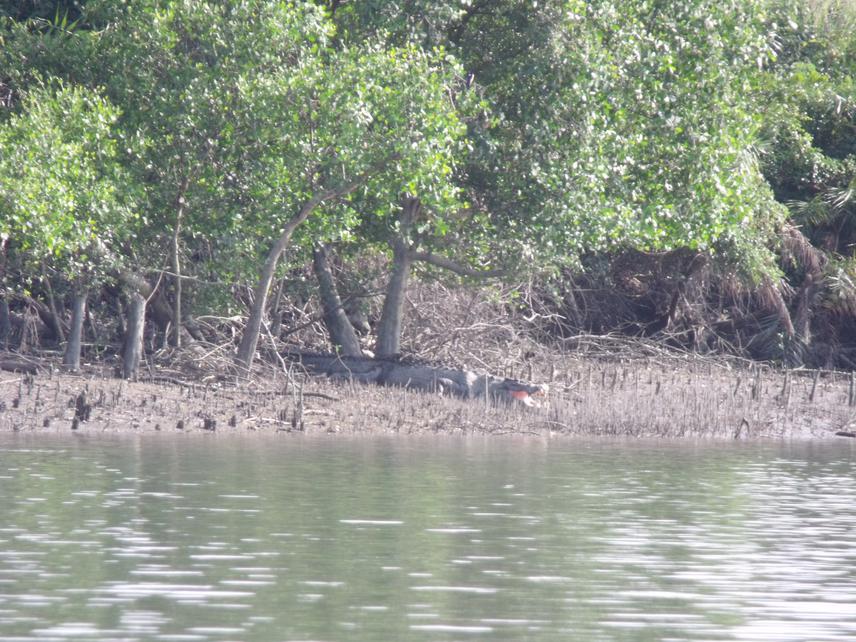Kay Zin Than
The saltwater crocodile, Crocodylus porosus, is the confirmed species of crocodilian known to currently occur in Myanmar. The viable population of saltwater crocodiles exists only in Ayeyarwady delta described by the 1999 survey data particularly in Meinmahla Kyun Wildlife Sanctuary (MKWS). MKWS is one of the protected areas (PAs) in Myanmar for the conservation and protection of saltwater crocodiles and the associated mangrove habitats. The habitat preference of saltwater crocodiles to mangrove landscapes is urgently needed to understand so as to support protected areas management and conserve the wild population of saltwater crocodiles to reduce the risk of extinction in Myanmar.

Crocodylus Porosus.
The saltwater crocodile (Crocodylus porosus), once widespread and abundant in Myanmar, numbers declined precipitously over the past 50 years as a result of commercial hunting for skins, collecting to stock crocodile farms and loss of habitat through the conversion of wetland habitats for agricultural use. Saltwater crocodiles and their associated mangrove ecosystem are conserved in Meinmahla Kyun Wildlife Sanctuary (MKWS) which is located in Ayeyarwady delta region of Myanmar. In Southeast Asia, Myanmar has the least coverage of protected areas and is still weak in protected area (PAs) management in terms of technology and knowledge about biodiversity conservation. Even so, the sanctuary, MKWS, has received little attention in recent years and the current status of the remaining saltwater crocodiles’ population is unknown. Although C.porosus is protected legally in Meinmahla Kyun wildlife sanctuary, no research concerning about the ecology and habitats of saltwater crocodiles except from periodically population survey has been carried out.
The population survey of saltwater crocodiles of Ayeyarwady Delta carried out in the year of 1999 estimated that the total population of Crocodylus porosus is less than 100 individuals and it stands for the only viable confirmed saltwater crocodile population of Myanmar. From then on, no backup study has been carried out to monitor the population structure and assess the situation of their associated habitats. On the other hand, wetlands ecosystem particularly in the southern Ayeyarwady delta region is dependent especially by the local communities for their subsistence and commercial purposes. Moreover, mangrove forests in Ayeyarwady delta fell into the deforestation hotspots among the 14 regions of Myanmar. Among the 43 protected areas, Meinmahla Kyun Wildlife Sanctuary is one of the protected areas for the conservation of mangrove biodiversity in the Ayeyarwady region of Myanmar. Biodiversity restoration programmes have been implementing by the cooperation of local NGOs, forest department and local villagers especially to establish mangrove plantations and community forests in the consideration of sustainable mangrove forest management and socioeconomic development. Moreover, empirical research conducting on population abundance, distribution and habitat preferences of saltwater crocodiles is of crucial importance to support the conservation strategy of Meinmahla Kyun Wildlife Sanctuary for the restoration and sustainable management of biodiversity in Ayeyarwady delta, Myanmar.